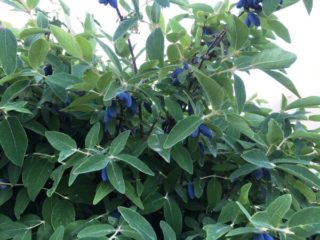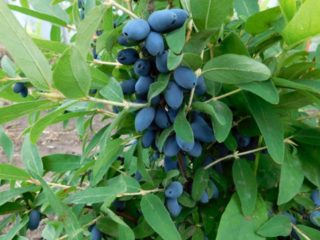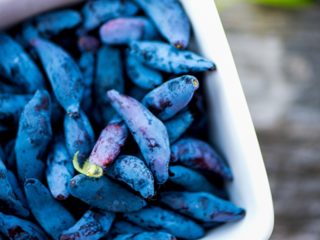Content
The cultivation of edible honeysuckle in recent years has become a very popular activity among gardeners, not only in Russia, but also in the world. Moreover, varieties have appeared that can be cultivated industrially using means of mechanization. One of them is Berel's honeysuckle.
Description of Berel honeysuckle
In Russia, the cultivation of edible honeysuckle on an industrial scale was seriously taken up in the middle of the last century. Unpretentiousness, productivity, useful properties of berries - all these qualities have become the reason for increased interest in this culture. It was then that breeders began to develop new varieties suitable for cultivation in a wide variety of climatic zones. In those days, honeysuckle was seriously considered as an alternative to traditional berry bushes, the cultivation of which in many regions of Russia is fraught with certain difficulties due to the unfavorable climate.
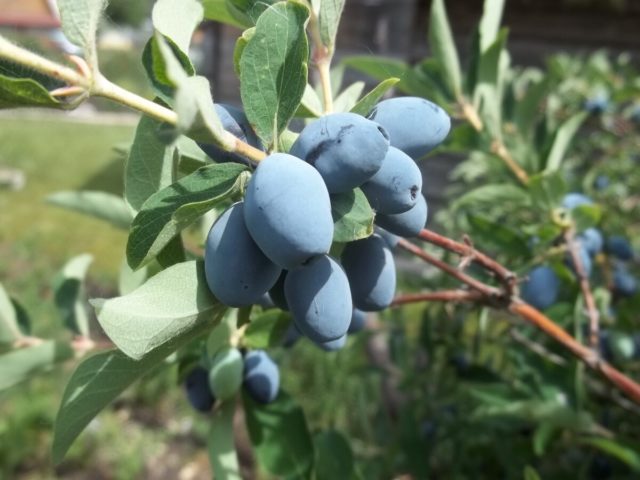
Honeysuckle Berel - a product of domestic selection
The breeders of the Lisavenko Research Institute of Horticulture in Siberia finished work on the edible honeysuckle variety Berel in 1980, and in 1996, after the conducted variety trials, it was added to the State Register. For breeding, the genetic material of the varieties of honeysuckle Altayskaya 12-19 (Sirius), Goluboe spindle, Lazurnaya, Sinyaya ptitsa was used.
Next, a description of Berel's honeysuckle will be given, photos are shown, reviews of gardeners are given. The main parameters of the variety are presented in the table:
Parameter | Value |
Plant type | Perennial deciduous shrub |
Crown | Compact, medium spreading, up to 2 m high and up to 1.5 m in diameter |
Escapes | Smooth, powerful, without pubescence. Young shoots are green, later light brown, pinkish from the sunny side in the upper part of the bush, with age they turn reddish-brown. |
Leaves | Large, oval-elongated, with a rounded tip and wedge-shaped base. The petioles are short. The leaf plate is bright green, slightly pubescent on the reverse side, in the upper part of the bush it is usually curved like a boat. |
Roots | Treelike, with many small roots. |
Flowers | Large, white with a pinkish tinge. Flowering occurs in May. |
Self-fertility | Self-fertile variety, requires pollinators. |
Fruit | The berries are oval, elongated, dark blue, with a bluish bloom, reminiscent of waxy. Weight usually ranges from 0.4-1 g. |
Taste | Sweet and sour, with a slight bitterness, pleasant. |
Appointment | Universal. |
Keeping quality of fruits, transportability | High. |
Yield | Up to 4 kg from 1 adult bush. |
Ripening period | End of June and beginning of July. |
Planting and caring for honeysuckle
Honeysuckle Berel is an unpretentious shrub with good winter hardiness and good immunity to diseases and pests. With the right choice of place and proper care, the lifespan of this plant can be up to 50 years, half of which it will bear fruit abundantly.
Landing dates
Berel belongs to the early varieties of edible honeysuckle. The vegetation of this shrub begins in early spring, and this creates certain difficulties in meeting the planting dates in this fleeting period. Autumn planting is more correct and justified.Berel honeysuckle is planted in the second half of September or early October. When choosing the best time, you need to focus on the climatic features of the region and calculate the landing date so that after the work there is at least 1 month before the onset of frost.
Selection and preparation of the landing site
In order for Berel's honeysuckle to grow well and actively bear fruit for many years, it is necessary to plant it correctly on the site.
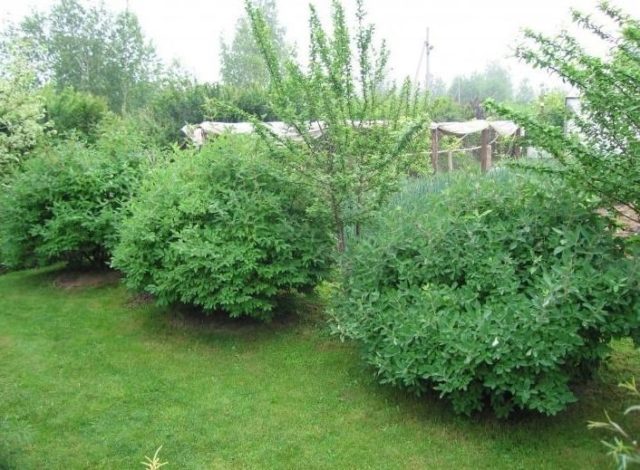
Correct planting is the key to successful growth of Berel honeysuckle
Here are the basic requirements for the place where the shrub should grow:
- South, southeast side of a building or structure, a fence that shelters plantings from the north wind.
- Open area or light partial shade. In shady areas, honeysuckle grows worse, and the fruits are more sour.
- Fertile, loamy or sandy loam soil with good air permeability.
- The groundwater level is not closer than 1 m to the surface.
Planting holes with a depth of at least 0.5 m must be prepared in advance. The removed soil is mixed with humus in a 1: 1 ratio, additionally adding a few tablespoons of superphosphate and potassium salt for enrichment. It is also advisable to add at least 1 cup of wood ash.

The size of the planting pit should correspond to the volume of the seedling root system
Landing rules
The procedure for planting Berel honeysuckle is simple. It is especially easy to do this if the seedling is in a container with a closed root system. In this case, it is removed along with a lump of earth on the roots and placed in a planting pit, holding it strictly vertically. The root collar is not buried; it must remain flush with the soil surface. The remaining voids are filled with soil substrate and tamped well.
If the Berel honeysuckle seedling has an open root system, then a small mound of earth must first be poured onto the bottom of the planting pit. The roots are straightened along its slopes, and then covered with nutritious soil, periodically compacting it. In this case, you also need to monitor the level at which the root collar of the Berel honeysuckle seedling will be after planting. It is not necessary to deepen it.
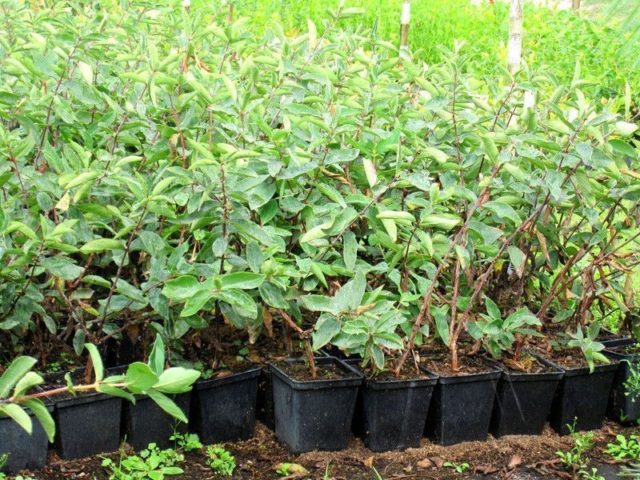
It is preferable to use seedlings with a closed root system for planting.
After finishing the excavation work, the root zone of the seedling is spilled abundantly with water, and then mulched with fallen leaves or humus.
Watering and feeding
Berel's honeysuckle loves moisture, but does not tolerate excess of it. Watering should be regular, but very dosed. Lack of moisture, especially during the ripening and pouring of berries, negatively affects the taste, a noticeable bitterness appears in them. A severe water shortage can lead to premature falling of fruits, curling of leaves and other unpleasant consequences. To avoid this, with a lack of atmospheric moisture, Berel's honeysuckle is watered about 1 time per week, pouring at least 10 liters of water under the root. In case of drought, watering rates can be doubled, especially during the fruiting period.
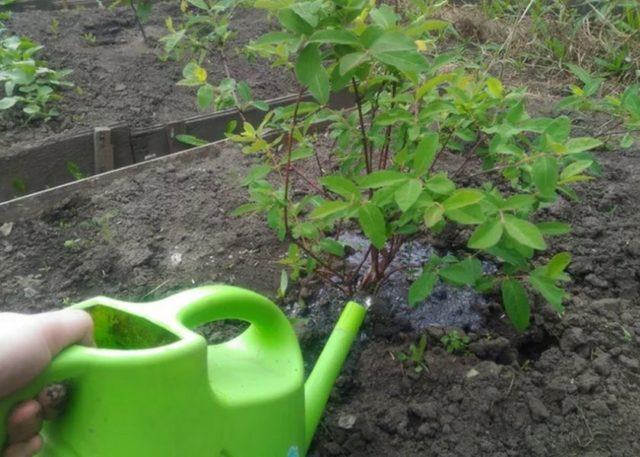
Watering the Berel honeysuckle should be moderate but regular
The first 2 years after planting, Berel's honeysuckle is not fed. For this period, the fertilizers that were applied during planting are quite enough. From the third year, the shrub usually begins to bear fruit, while it will absorb nutrients from the soil much more intensively. From this time on, you need to start feeding it periodically. An approximate table of fertilizers used and the timing of their application for Berel honeysuckle is given below:
Terms of work | Feeding method | Fertilizers and dosage |
Early spring, before the start of the growing season | Root | Ammonium nitrate, 15 g per 1 sq. m. trunk circle. |
Foliar | Urea (carbamide), 20 g per 10 liters of water. | |
At the end of flowering | Root | Organic matter (rotted manure, humus), 10 kg for each bush. |
Autumn, after fruiting | Root | Superphosphate (20-30 g) + potassium sulfate (1-20 g) per 1 sq. m. root zone. |
Pruning
There are several types of pruning of edible honeysuckle, which includes the Berel variety:
- Sanitary... Held annually in spring and autumn, as well as at any time of the year in case of emergency. It consists in removing dry, diseased, damaged shoots.
- Thinning... This type of pruning is carried out to remove abnormally growing shoots lying on the ground or thickening the bush, as well as to eliminate excess root growth. The procedure is carried out in the fall after the end of the growing season, but before the onset of frost.
- Rejuvenating... With age, the annual growth of the shrub becomes less, respectively, and the fruiting decreases. In the course of anti-aging pruning, some of the old perennial wood is removed, in exchange for which new, young shoots are grown. This type of pruning is performed at the same time as the thinning.
- Formative... Allows you to get not only a healthy, but also a beautiful honeysuckle bush Berel. This type of pruning is carried out in the fall, after fruiting. During the work, weak shoots are removed, cut or corrected the direction of incorrectly growing branches, and the skeleton of a shrub is formed.

Dry branches can be removed at any time
Wintering
Honeysuckle Berel has excellent winter hardiness. Usually, no measures are taken to prepare the shrub for winter. However, in the northern regions, it will not be superfluous to insulate the root zone by covering it with a thick layer of peat or humus.
Honeysuckle pollinators Berel
Any type of Kamchatka or Altai honeysuckle is suitable as pollinators for Berel honeysuckle. The best pollinator is the Kamchadalka variety.
Reproduction
Honeysuckle Berel can be propagated both by seed and vegetative way. It is not difficult to grow seedlings from seeds, however, the parental characteristics of such plants are often lost, therefore, their quality will differ greatly for the worse. To preserve all the positive properties of Berel honeysuckle in full, vegetative propagation methods are used, such as cuttings, layering and dividing the bush.
Cuttings are an excellent breeding method for Berel honeysuckle. The highest percentage of rooting (up to 60%) is given by green cuttings taken from a shrub at the very beginning of fruiting. In this capacity, annual shoots 15-40 cm long are used, while they are not cut off, but are torn off from the mother's branch "with a heel." The cuttings of Berel honeysuckle prepared in this way are kept for 12-15 hours in a solution of a root formation stimulator, and then planted in special beds.
The beds for germinating cuttings must meet the following requirements:
- Good lighting in the morning, shade at lunchtime.
- Loose prepared soil from a mixture of sand, peat and turf.
Berel honeysuckle cuttings are planted obliquely, at an angle of 45 °, facing south. The soil should be moderately moist at all times. For the first time, it is better to cover the planting material with a film from direct sunlight. Cuttings usually develop their own root system in 3 weeks. In the first winter, young plants must be covered with spruce branches.
For more information about grafting honeysuckle, see the video at the link:
Another rather simple way of breeding Berel honeysuckle is to divide the bush. Plants older than 10 years can be separated. In this case, the shrub is dug out of the ground and several parts are separated from it, each of which contains at least 3 shoots with its own root system. The deprived parts are immediately planted in new places as independent seedlings.
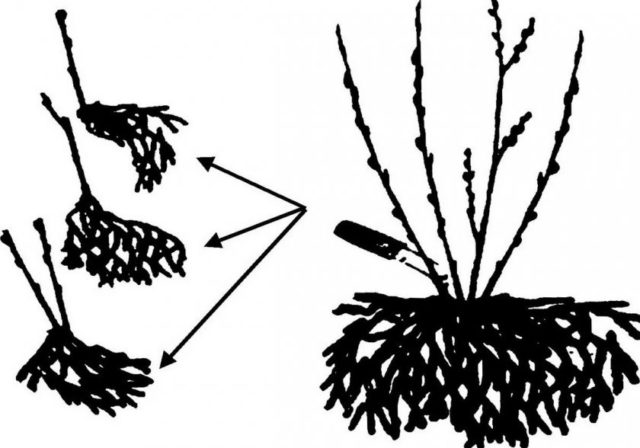
Dividing a bush is an easy way to propagate Berel's honeysuckle
Air layers from the Berel honeysuckle bush can be obtained by digging in one of the side shoots. During the summer, a new root system will form in the internodes, and the cuttings will give their own shoots. For the winter, it is left with the mother's shoot, and in the spring it is cut off and planted in a new place.
Diseases and pests
According to the information of the originator (Scientific Research Institute of Horticulture of Siberia named after M.A.Lisavenko), the honeysuckle variety Berel is not affected by diseases. Of the pests, aphids are a danger to the plant - a microscopic insect that feeds on the juices of leaves and young shoots. Rapid reproduction of aphids leads to the formation of numerous colonies of insects, as a result of which honeysuckle is inhibited, leaves and shoots dry out from lack of nutrition, and the fruits fall prematurely.
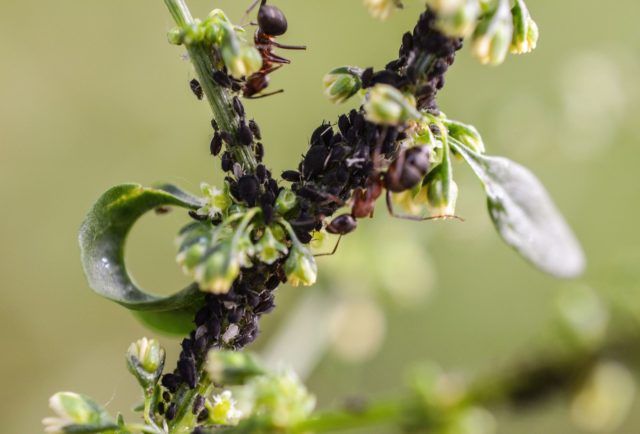
Aphids are a malicious garden pest
To combat aphids, various folk remedies are used, such as infusion of tansy, celandine, chamomile, tobacco. At the initial stage, this is quite enough. If the colonies of aphids have reached significant sizes, then insecticides will have to be used, for example, Fufanon, Iskra or Inta-Vir.
Conclusion
Honeysuckle Berel is one of the many edible varieties suitable for cultivation in various regions of Russia. It has good indicators of resistance to a variety of adverse factors and does not require intensive care. At the same time, the variety demonstrates a good yield, and the light bitterness in taste, which is inherent in Berel's honeysuckle, which is considered a disadvantage, completely disappears after heat treatment.




